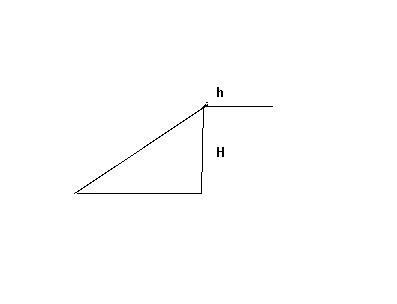
Let's say you saw this problem: Find the work required to push a box up the ramp and to the right with only this labeled. Or the height of the ramp labeled and the hypotenuse of the ramp. Only two variables. You see four answer choices like this:
sin H + h / h
cos H + h / h
H-h/h
H+h/h
I don't remember the exact answer choices, so it could be H-h or H+h, but I know they looked like that. But it's driving me mad. I'm not even sure if the problem labeled the hypotenuse or the extra length. I do know that the height was definitely labeled. How could a ratio of meters indicate the work? I'm thinking that it has to include mechanical advantage somehow, but I'm not sure. Any ideas?
